Property market
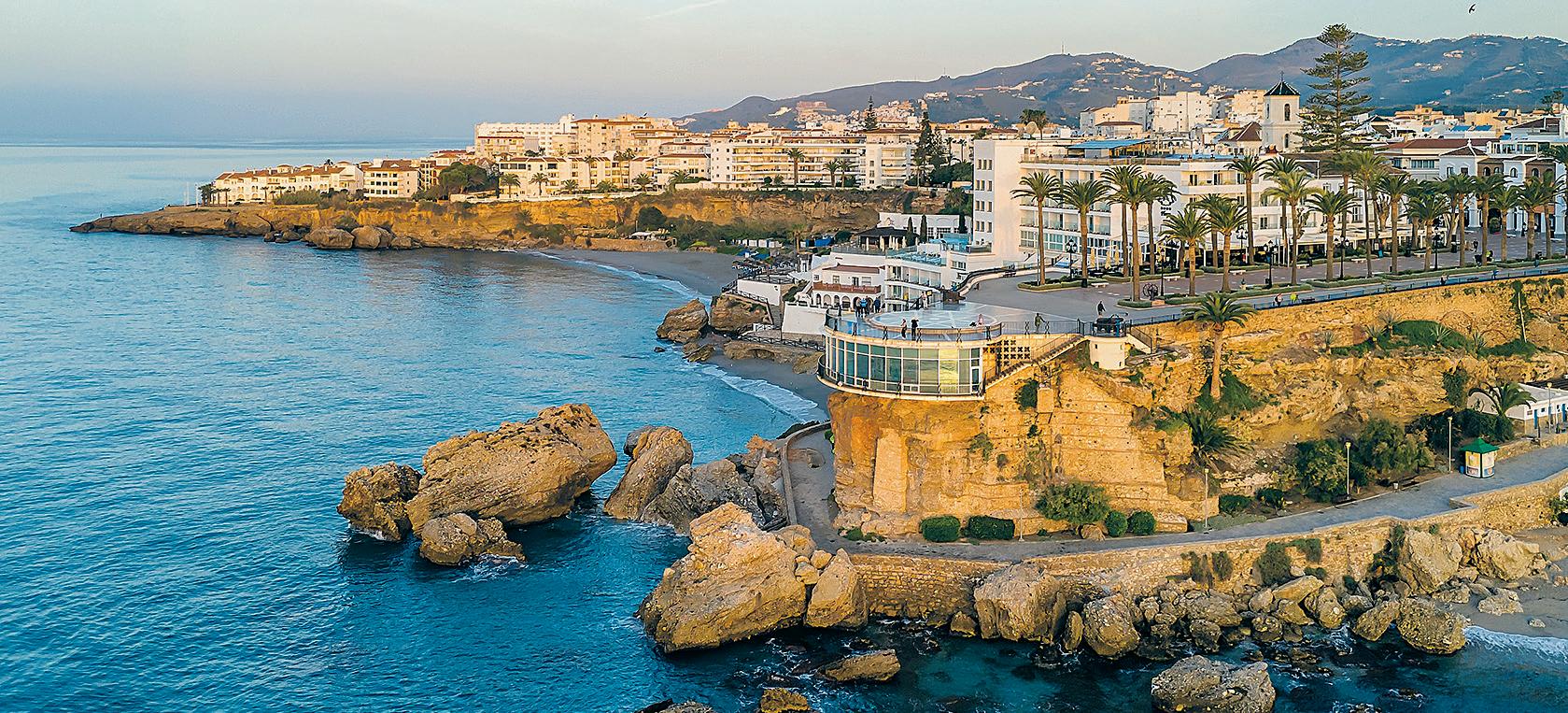





THE Axarquia property market is entering a new phase of confidence, supported by strong expatriate demand, upgraded infrastructure and the arrival of new digital tools designed to make buying in Spain more transparent. International buyers continue to drive the region’s momentum, with verified online listings, transport investment, and commercial growth shaping market conditions across the Malaga Province.
According to a statement published on OpenPR, the newly launched platform Spain-Real.Estate aims to offer ‘a transparent, convenient way for global buyers to explore verified homes across Spain’. The service brings together thousands of checked listings from certified agencies, with daily updates, professional photography, and neighbourhood data to support remote decision-making - an increasingly important
LIKE many places around Spain, Axarquia’s popularity is only growing. Axarquia is in a prime location. Close to Malaga airport, multiple blueflag beaches attract summer tourism, and the in-land space leaves room for outdoor activities such as hiking and cycling, fun all year round.
The association for the promotion of tourism (APTA) reported a 17.4 per cent increase in overnight tourists between 2023 and 2024. It’s rise in popularity as a tourist destination means there’s

also an influx in second-home buyers in the area, maxing for an excellent opportunity.
While places like Malaga or Marbella have seen an extraordinary rise in prices, Axarquia’s are comparatively cheaper. The more inland you are, the more you get for your money.
The average property price in Axarquia is €396,072, while the average in Costa del Sol is €725,000. Your money goes further, providing better return-on-investment po-
feature for UK and European expatriates purchasing from abroad.
Connectivity remains one of the most significant drivers of property demand throughout the Axarquia. Airport operator Aena has confirmed plans to invest €13 billion across Spain’s aviation network between 2027 and 2031, as reported by CAPA.
Malaga Airport is named among the main beneficiaries, with Aena stating
that investment will be “governed by actual traffic and future projections.” For expatriates, the expansion reinforces long-term accessibility to the region.
For expatriates seeking a laidback lifestyle, rental potential, and long-term stability, the current climate suggests the Axarquia remains one of Europe’s most reliable coastal markets. It offers strong prospects for both personal use and investment.
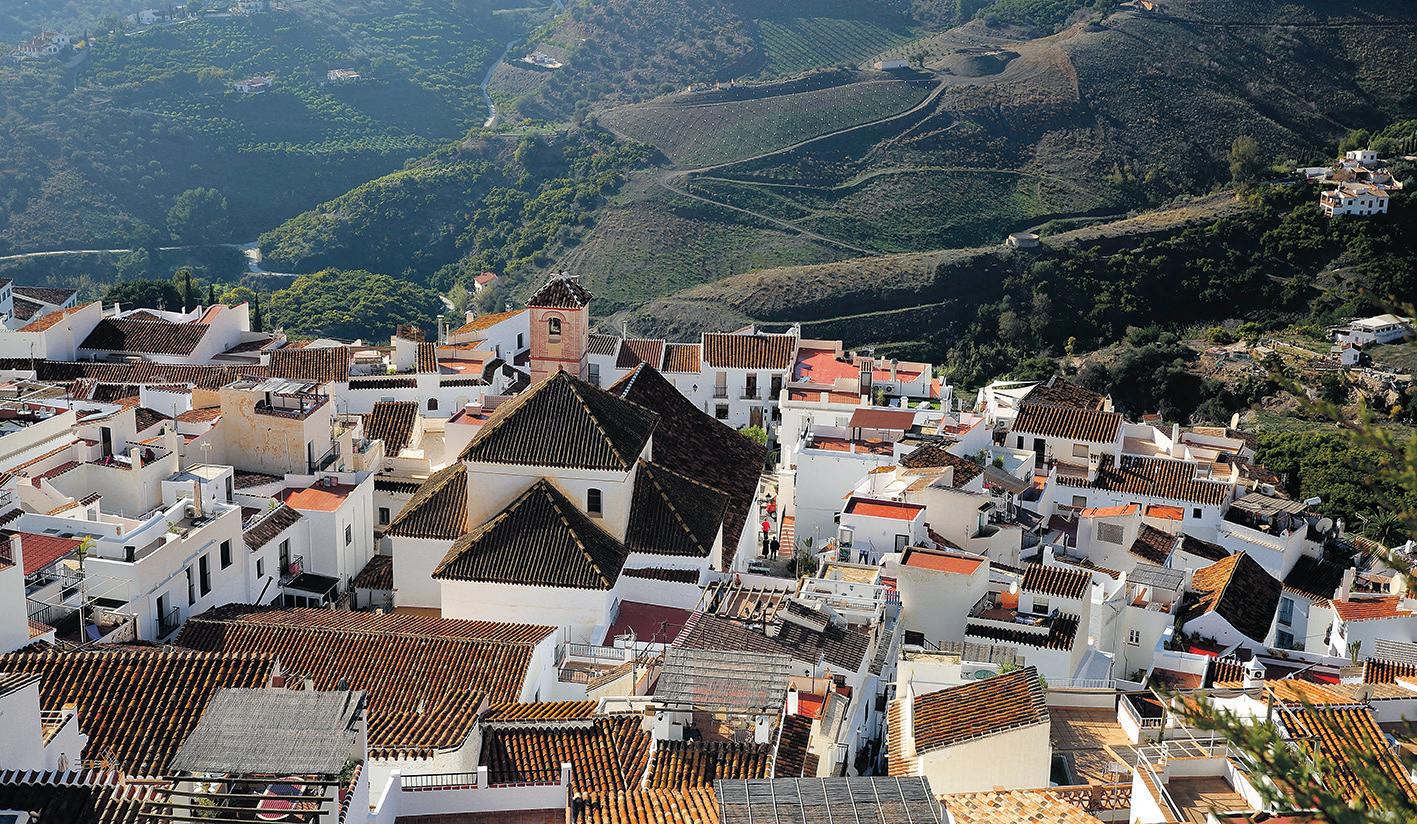
Older homes here hold great potential. Add a couple coats of paint and upgrade your property with modern amenities and you instantly boost the
value and the potential rental income, providing you with a significant profit.
Each year, more European investors, digital nomads,
and
ONE of the great joys of life in Spain is living outdoors. Whether you’re sipping coffee on a sunny balcony or hosting friends on your terrace, your exterior space becomes an extension of your home and lifestyle. With more than 300 days of sunshine a year, even the smallest corner can become a slice of Mediterranean paradise.
So, whether you’ve got a city apartment with a Juliet balcony or a sprawling finca garden, here’s how to make the most of it - Spanish style.
Think of your outdoor space as a room
In Spain, terraces and gardens are as vital as living rooms. Define your space’s purpose - dining, lounging, gardening, or all three - then design around it. Use layout, colour and comfort to guide you: an outdoor rug zones a dining area, while pots or hedges divide larger gardens into inviting ‘rooms’.
Style by size
Small balconies shine with simplicity: a slim café table, folding chairs and terracotta pots of herbs or geraniums. Add soft textiles and fairy lights for charm.

Patios and courtyards thrive on texture - tiled floors, low rattan seating and citrus trees in terracotta pots. A trickling fountain adds tranquillity.
Terraces suit multi-purpose living: dining beneath a pergola, lounging under olive trees, and glowing string lights for magical evenings.
In large gardens, create pockets of paradise - hammocks, shaded reading nooks or pergola-draped dining spots - linked by gravel paths and native plants like lavender, rosemary and succulents.
Shade, light and greenery
A parasol, awning or pergola covered in bougainvillaea provides essential shade. Hardy plants - olives, lavender, citrus and bougainvillaea - thrive with little water. Layer lighting for atmosphere: wall sconces for structure, lanterns and fairy lights for warmth. Make it personal
Spanish life celebrates togetherness. Invest in comfortable seating, add colourful ceramics and outdoor rugs, and make it a space you’ll linger in daily - from morning coffee to midnight wine.
Because in Spain, outdoor living isn’t a luxury - it’s a way of life.


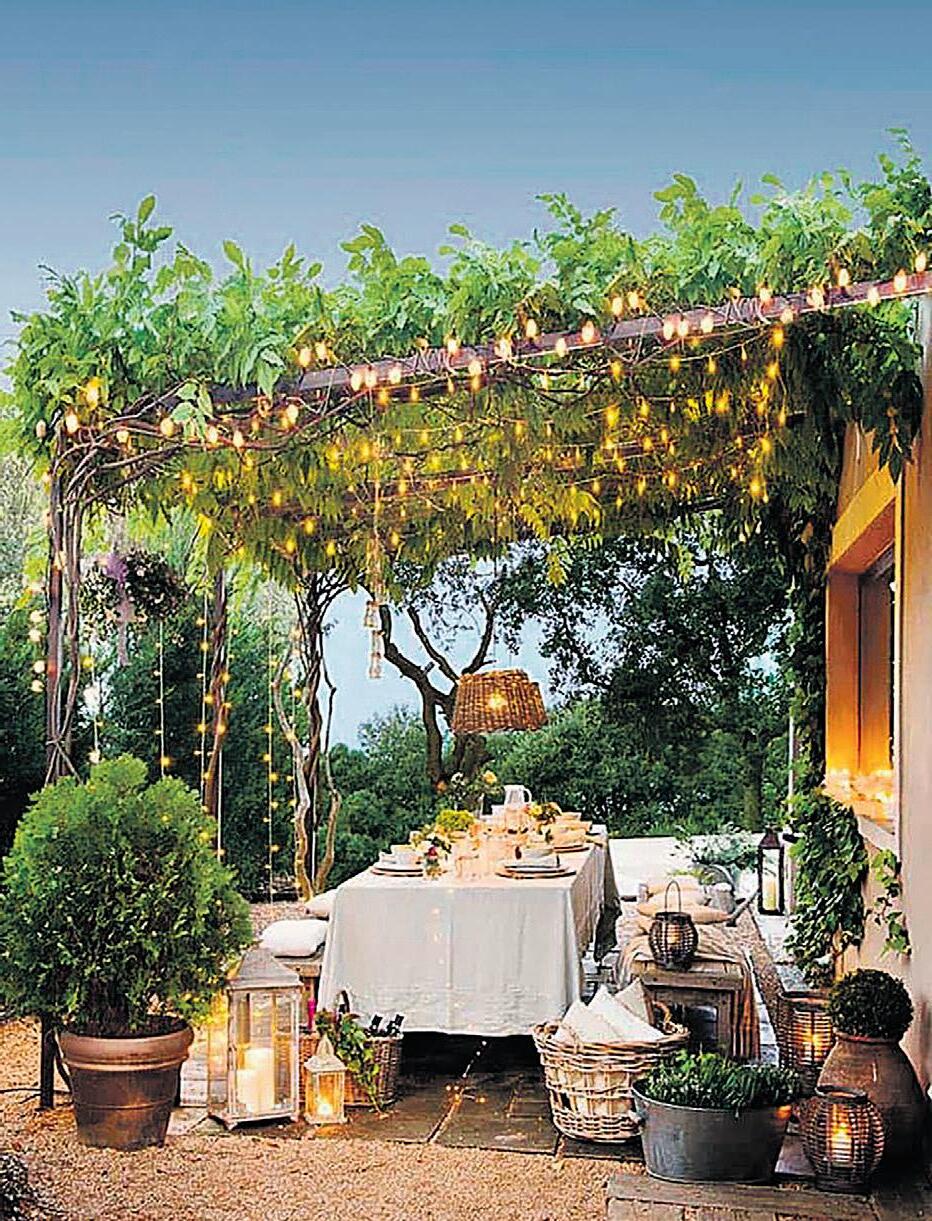
From balconies to backyards.







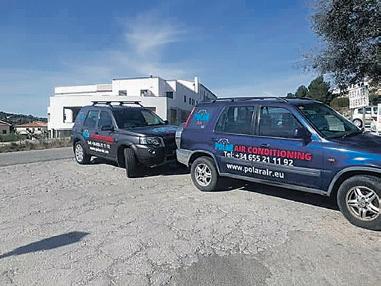
POLAR Air Conditioning offers a dependable and personable service, supplying high-quality products at competitive prices.
Air Conditioning from Malaga to Axarquia · Costa del Sol Serving the area from Malaga to Axarquia, their certified AC and refrigeration technicians carry out repairs, servicing, supply, and installation of all manufacturers’ equipment. All work is guaranteed, and new air conditioning units come with up to a 10-year warranty.
Polar Air provides energy-efficient inverter technology air-conditioning systems from Malaga to Axarquia, suitable for both cooling and heating. These systems can reduce running costs to as low as four cents per hour for both homes and businesses. They’re F-Gas qualified and able to work on all air-conditioning units.
They ensure quality work at fair prices, covering all makes and models at the best rates, with service extending throughout Malaga and the Axarquia area.
For further information call 0034 655 211 192. www.polarairconditioningmalaga.com
SPAIN has had an overheated housing market lately. The buyers worry about rising prices and lack of space, and in this hot climate, a quiet revolution is taking place. Instead of building from zero, property watchers are seeing a sharp change: the conversion of offices, shops and commercial units into homes. And this strategy is becoming a popular response to both soaring demand and vacant buildings.
According to consultancy CBRE, more than 390,000 square metres of space began transformation in 2024 alone, with 70 formal ‘changes of use’ recorded across Spain. The trend only gained momentum in the first half of 2025: over 137,000 square metres were converted in the period, a 4 per cent increase year-on-year.
Experts say this mismatched supply and demand is exactly what’s driving the conversions. Big cities such as Madrid and Barcelona remain conversion hot-spots, but now second-tier regions like Andalucia are gaining traction. Cities like Malaga or Sevilla are offering more attractive land and, at the same time, lower costs for developers.
For investors, converting an underused commercial unit into housing can unlock value faster than new builds. Meantime, for buyers, especially those priced out of traditional market segments, these are golden opportunities to access properties that might otherwise not have existed.
Transformation requires planning permission, building work and a change-ofuse certificate.

NEARLY four decades ago, Katy De Csanady-McEwen swapped the quiet charm of her Cotswolds village for the vibrant coastal town of Nerja. Arriving in 1984, her first role in Spain was selling properties on the local nine-hole golf course. A few years later, she broadened her skills working as a lawyer’s secretary and in insurance, before returning to the property market in 1994this time with the experience and determination to build a long-lasting career.
Since then, Katy has become a respected name in real estate, recognised for her careful approach and dedication to her clients. She insists that every home she markets is legally sound and takes pride in guiding buyers and sellers through each stage of the process. Her reputation is rooted in trust, professionalism, and attention to detail.
One of Katy’s greatest strengths is her ability to communicate across cultures. Fluent in English, Spanish,

French, and German, she has earned the confidence of an international clientele, making transactions smoother for all involved.
In addition to property sales, Katy provides translation and interpreting services. From medical visits and official paperwork to wills, powers of attorney, police reports, NIE fiscal numbers, residency applications, digital nomad paperwork and even court appearances, she ensures her clients are supported with clear, accurate communication - whatever the circumstance.
For enquiries, call 625 683 749, email info@knowneria. com, or visit www.knowneria.com

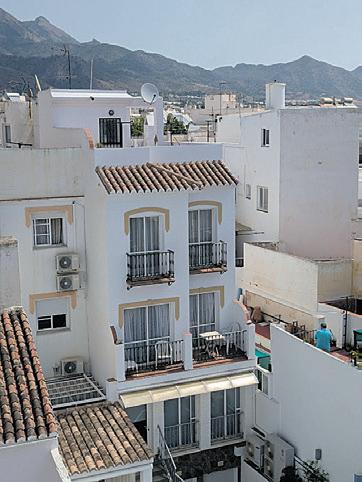

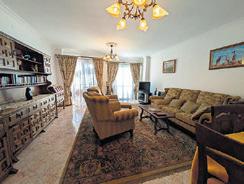
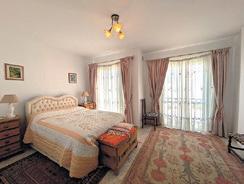
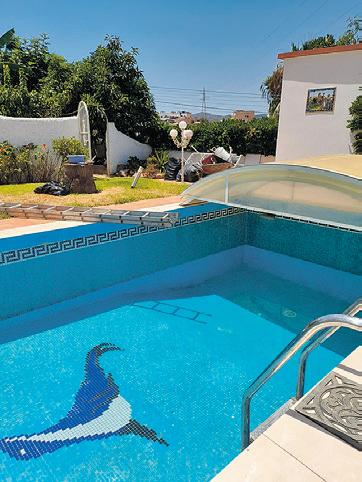
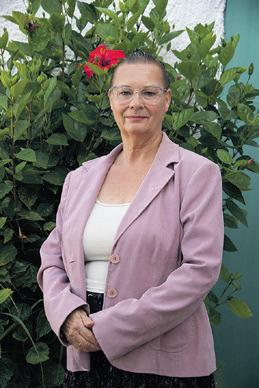

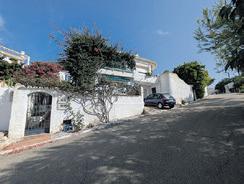

SPAIN’S property market is entering what analysts are calling a ‘historic phase’, with prices expected to reach record highs by 2026 if current trends continue. According to Idealista, second-hand home prices jumped nearly 16 per cent in October, reaching €2,555 per square metre - the highest level ever recorded for Spain’s resale market. A separate report by Fotocasa found an 18 per cent yearon-year rise in national housing prices, placing the average at €2,789 per square metre - just 5.5 per cent below the peak of the 2007 property boom. “2026 is shaping up to be the year of historic prices,” said Fotocasa’s research director, María Matos. So far, there is little evidence that the trend will slow.
At the heart of the surge is a severe imbalance between demand and supply. The number of homes for sale remains extremely low - only 9 per cent above Spain’s all-time minimum in 2014 - while demand continues to grow. Rising rents have also worsened the situation. As rental prices climb, more people are rushing to buy before prices rise further, while those unable to purchase are forming a ‘delayed demand’
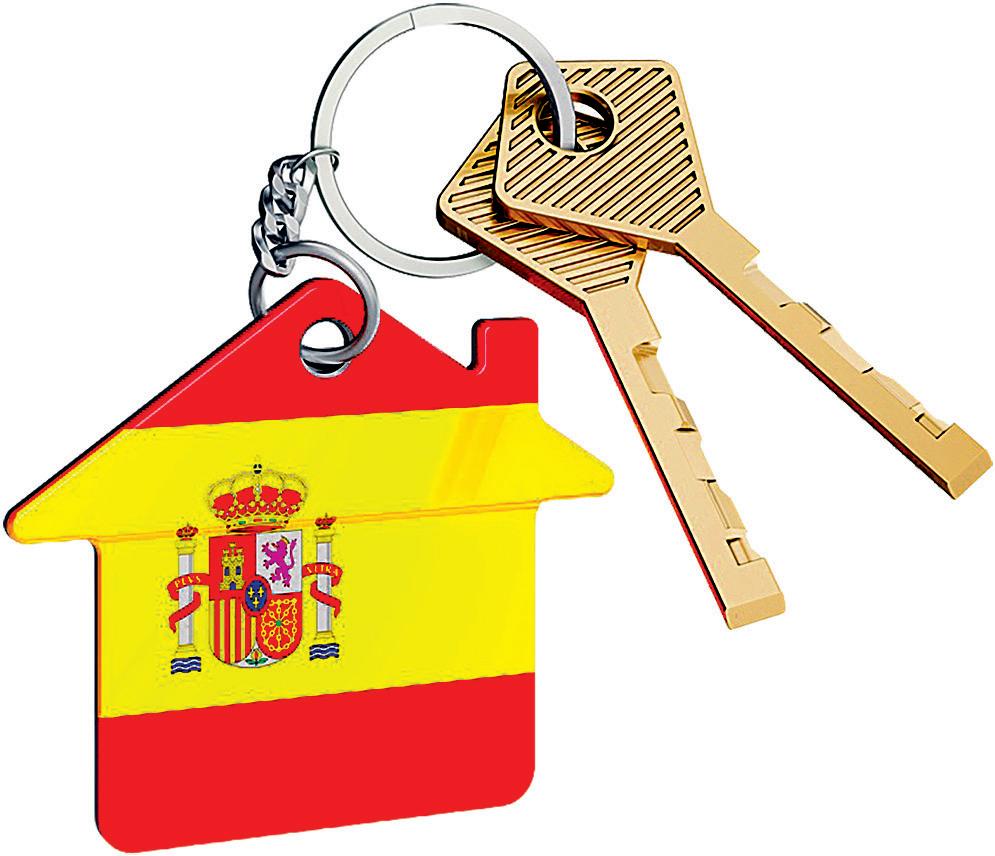
VENETIAN design is experiencing a revival in Spanish homes, blending warmth, texture, and artisan craftsmanship with traditional Mediterranean architecture. After years of minimalism and Nordic-inspired interiors, homeowners are reintroducing layered colours, decorative details, and tactile surfaces, creating spaces that feel lived-in and emotionally resonant. The historical connection between Venice and Spain, both regions shaped by Mediterranean light and rich textures, makes this style especially compatible with Spanish domestic interiors.
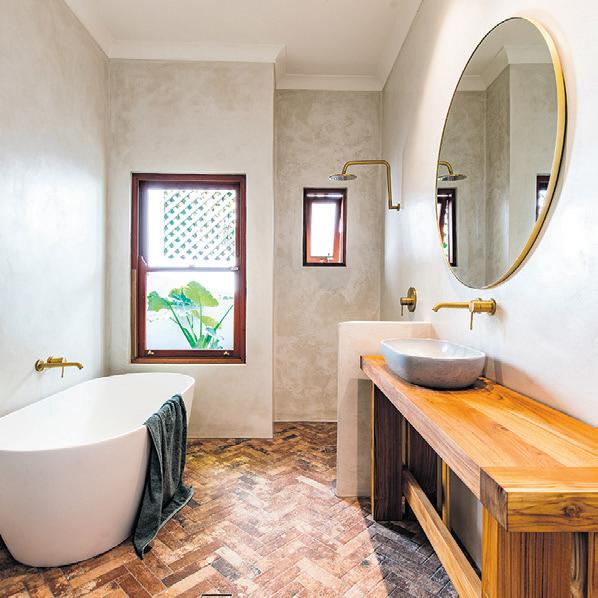
A central element of this trend is Venetian plaster (estuco veneciano), which enhances walls with subtle tonal depth and captures natural light beautifully. Its application complements Spain’s sunlit interiors, thick walls, and traditional materials such as terracotta, limestone, and hydraulic tiles. Alongside plaster, earthy colours like terracotta, olive, blush, ochre, and cream are replacing the minimalist greys and whites, creating soft, grounded spaces that balance aesthetic elegance with functionality.
Murano glass features prominently, with handblown chandeliers and pendants adding shimmer without overwhelming rooms. Spanish designers often incorporate one or two statement Venetian pieces, such as a chandelier or mirrored console, to anchor spaces while maintaining harmony with existing architectural features like high ceilings and decorative tiling. The revival aligns with a broader appreciation for local craftsmanship, including carved wood, ironwork, textiles, and glass. Rather than maximalist opulence, Venetian-inspired Spanish interiors emphasise subtle atmosphere, warmth, and tactile beauty, creating timeless homes that combine history, personality, and Mediterranean light.
that analysts expect will keep pressure on prices in the years ahead.
Falling mortgage rates have only intensified the rush. After the Euribor dropped to around 2 per cent from a 2023 high of 4 per cent, many buyers who had paused their plans have re-entered the market. Fotocasa reports that 21 per cent of Spaniards are now actively looking to buy - up from 18 per cent last year - while rental participation has stayed flat at 17 per cent. But the housing boom is leaving young Spaniards behind. Among 18- to 24-yearolds, participation in the property market fell from 54 per cent to 44 per cent in one year, as deposits, unstable employment, and surging rents make independence nearly
Unless Spain rapidly increases housing supply or demand cools, the forecast remains clear: 2026 could mark a new peak in property prices - and for many Spaniards, the dream of owning a home may move even further out of reach.
HAS the cold weather turned your green thumb a concerning shade of blue? Wanting to bring life to your home as you hunker down for the winter? There are some beautiful winter houseplants that even the bluest of thumbs can keep alive.
Snake plants and ZZ plants are as low-maintenance as they come, water them when you remember and they should be good. They’re natural humidifiers and are proven to boost mental-well-being, a good way to beat the winter blues.
A poinsettia is a great choice for the festive season, as is Jasmine which blooms in late winter. Neither handle the cold well, but keep their soil moist and be rewarded with beautiful bulbs well into the new year.
I CERTAINLY wasn’t prepared for my first Spanish winter. Three years on, I still find myself shivering on the sofa, then stepping outside into 18°C sunshine and sweating.
If you’ve just moved - or are planning to - you’ll likely ask the same question: How can a sunny country feel colder indoors than out?
Much of Spain’s housing, especially on the coasts, was built to keep cool in summer. Tiled floors, concrete walls and wide windows are perfect for heatwaves but brutal in January. Around 30 per cent of homes still lack fixed heating, and even 18°C can feel chilly when walls and floors are cold to the touch.
Rainy season (roughly October to April) brings humidity - the stealth culprit that makes rooms clammy and feeds mould. Keep humidity near 50 per cent, open shutters by day and close them at dusk. Heat rooms steadily to 18-20°C, ventilate bathrooms and wipe condensation.
Quick fixes? Draught-proof doors and windows, lay rugs over tiles, and use thick curtains.
Despite the chill, there’s beauty in Spanish winter living - cosy evenings by the chimenea, vino tinto in hand and shutters firmly closed. Spain spoils you nine months of the year; the other three just need a little strategy - and a good blanket, and maybe some thermals.

FOREIGN buyers risking tens of thousands of euros on Spanish property face a hidden hurdle: the ITE (Inspección Técnica de Edificios), the compulsory ‘MOT for buildings’. This structural health check, required for residential blocks over 50 years old, and often as young as 30-45 in major cities, has become stricter. Missing it can halt sales, trigger fines or force costly repairs.
Governed nationally by Royal Decree-Law 8/2011 and enforced locally, the ITE certifies a building is safe, stable and watertight. For 2025–2026, thousands must submit reports by January 31, 2026. In Malaga, first-time checks apply to 1974 builds; renewals to 1964 ones.
Notaries and banks now demand a favourable ITE before completing sales or mortgages. An unfavourable or absent report freezes transactions. Expatriate buyers frequently lose deposits when sellers hide pending deadlines, as seen in Barcelona and Madrid forums.
An unfavourable ITE flags minor, serious or very serious defects. Owners must apply for a works licence within three months and finish repairs on council deadlines. Non-compliance brings daily fines up to €6,000, council-enforced works with a 20 per cent surcharge, or evacuation.
Protect yourself: check construction year free on the Catastro website (sede. catastro.gob.es).
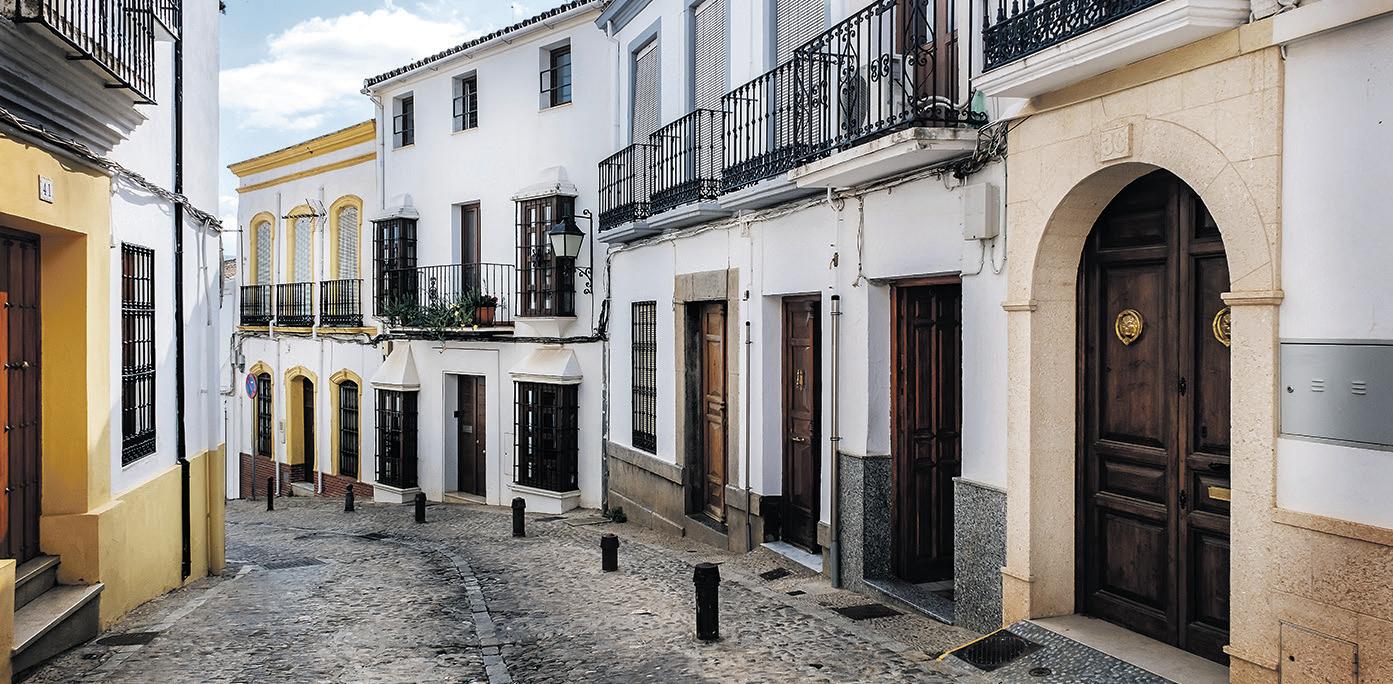
Older homes need structural checks.

WE are proud to be recognised as a group of real estate agents with a solid track record and deep experience in the sector. Diaz & Webber is a young company made up of experts with more than 10 years of experience in the sector, which allows us to offer a high quality service backed by solid knowledge of the real estate market.
Specialising in the sale and rental of real estate properties in the picturesque region of Axarquia, we cover a wide spectrum that includes Torre del Mar, Velez-Malaga, Algarrobo, Almayate, Benajarafe and beyond. Additionally, we offer tourist rental management services on the coast, providing comprehensive solutions for owners and tenants alike.
Our experience is not limited only to the intermediation of exis-
ting properties; We also stand out in new construction promotions, helping our clients find the home of their dreams from the beginning of the construction process to the final delivery.
At Diaz & Webber, we understand the importance of fluid communication, which is why we are proud to have native English and German speakers on our team. We value the trust you place in us and work tirelessly to exceed your expectations every step of the way.
Whether you are looking to buy, sell or rent a property, our team of highly trained professionals are here to provide you with a personalised and results-oriented service. Contact us today and discover how we can help you make your real estate dreams come true in beautiful Axarquia.
(+34) 952 542 200 - (+34) 615 965 121 info@diazwebber.com
Avenida Toré Toré n°4A, Torre del Mar 29740, Malaga www.diazwebber.com


BUYING a fixer-upper in Spain and giving it a fresh lease of life can seem like the perfect way to get more for your money, especially in a country where older properties often offer plenty of charm and potential.
But managing a renovation in another country can come with surprises. From budgeting and local building rules to exchange rates and contractors, careful planning is key to keeping your dream project on track.
Building a realistic budget
The purchase price of your dream home abroad might seem like a steal, but if the property needs a lot of work, your initial savings can vanish fast.
You’ll need to factor in materials, travel and accommodation while working onsite, the cost of contractors, and local permits or taxes. But be warned: making a property liveable can quickly eat into any savings from a ‘bargain’ purchase.
Check
Before you fall in love with exposed beams and whitewashed walls, make sure the property is sound at its core. The foundation, structural supports, and roof should all be carefully inspected, particularly in rural or historic regions.
A sound structure gives you a good base to work on and helps prevent a property from becoming a hidden money pit. Consider hiring a local surveyor who knows the lay of the land and understands local codes.
Living, renting or flipping?
What you intend to do with the property will influence how you renovate. Are you planning to live there full-time, use it as a holiday home, rent it out or sell it later for profit?
Each goal comes with its own set of priorities. For example, if you plan to rent it, you may favour durability and minimal style-specific touches. If your goal is to
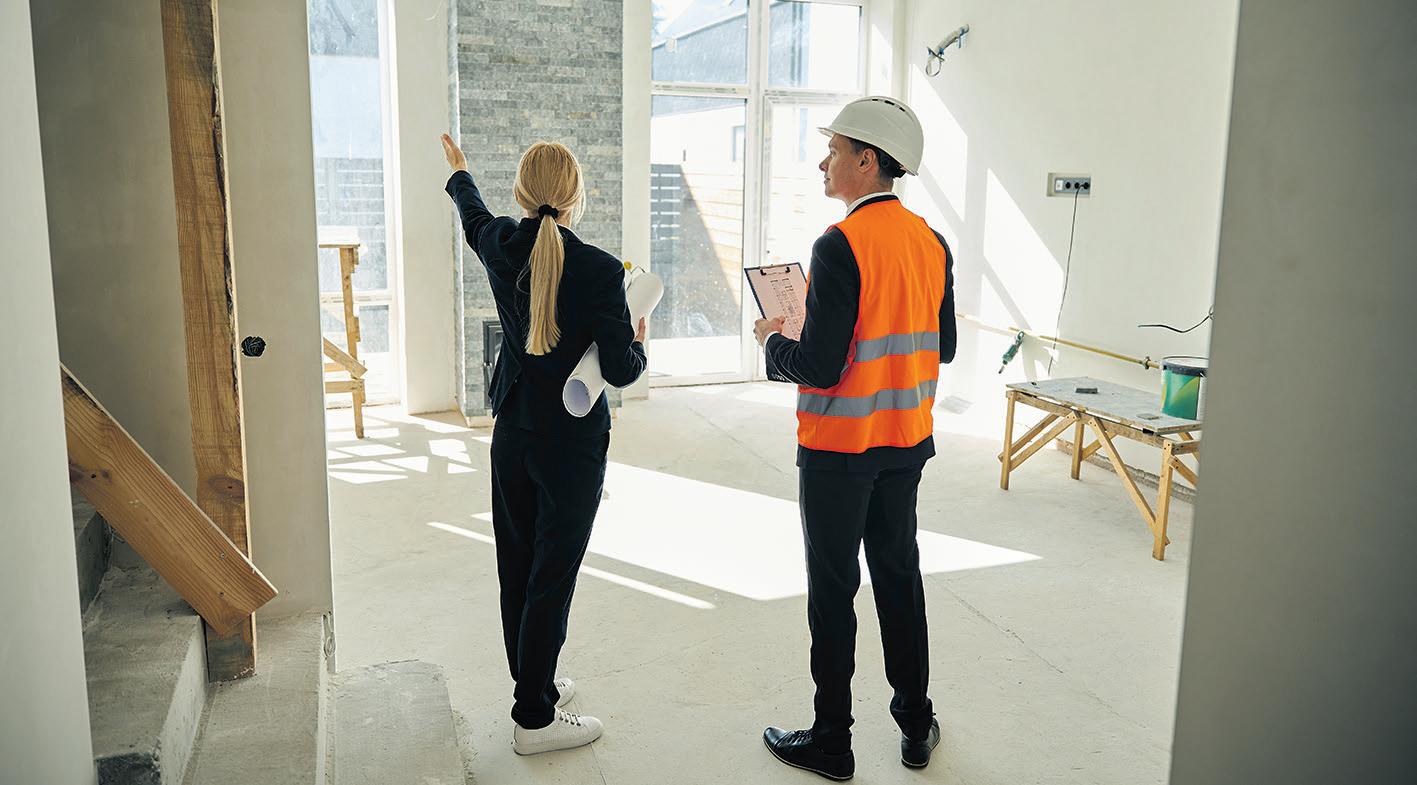
sell, you’ll want to maximise appeal to a broad audience and possibly retain a ‘blank canvas’ feel.
Getting the right local help
Undertaking a renovation abroad can mean dealing with language, local building regulations, and logistics from afar. Hiring reputable local contractors, and possibly someone who speaks your language, can reduce stress.
If you can’t be on site regularly, organise for regular progress updates with clear photographs and have someone local
who can act as your eyes and ears.
Maximising your renovation funds
If you’re buying and renovating in Spain but sending funds from the UK or elsewhere, you should consider your foreign exchange options.
Currencies Direct’s excellent exchange rates can help stretch your budget a little further than when transferring your money via a high-street bank. With the help of your own dedicated account manager, you can get guidance on when to time your transfer to maximise your returns.
Learn more by contacting Currencies Direct by phone on +34 950 478 914 or by visiting our website at currenciesdirect.es to find your local branch and speak to one of our multilingual experts.
AS the Spanish summer fades, expatriates are embracing autumn’s slower rhythmswapping sun-bleached terraces for cosy corners, and linen for layers.
Autumn in Spain is a subtle shift - less dramatic than northern Europe’s chilly descent, but still felt. The air cools, the light softens and summer’s buzz quiets. For expatriates, this is the season of the great home switch-over - that annual ritual of trading in summer minimalism for warmth, texture and a slower pace of living.
While the mercury may drop, the Spanish love of outdoor living doesn’t fade. According to Idealista, 63 per cent of home-buyers in Spain now prioritise outdoor and garden amenities such as terraces, green spaces, and pools - proof that the Mediterranean lifestyle revolves around the open air, year-round. The trick is adapting it beautifully for the season.
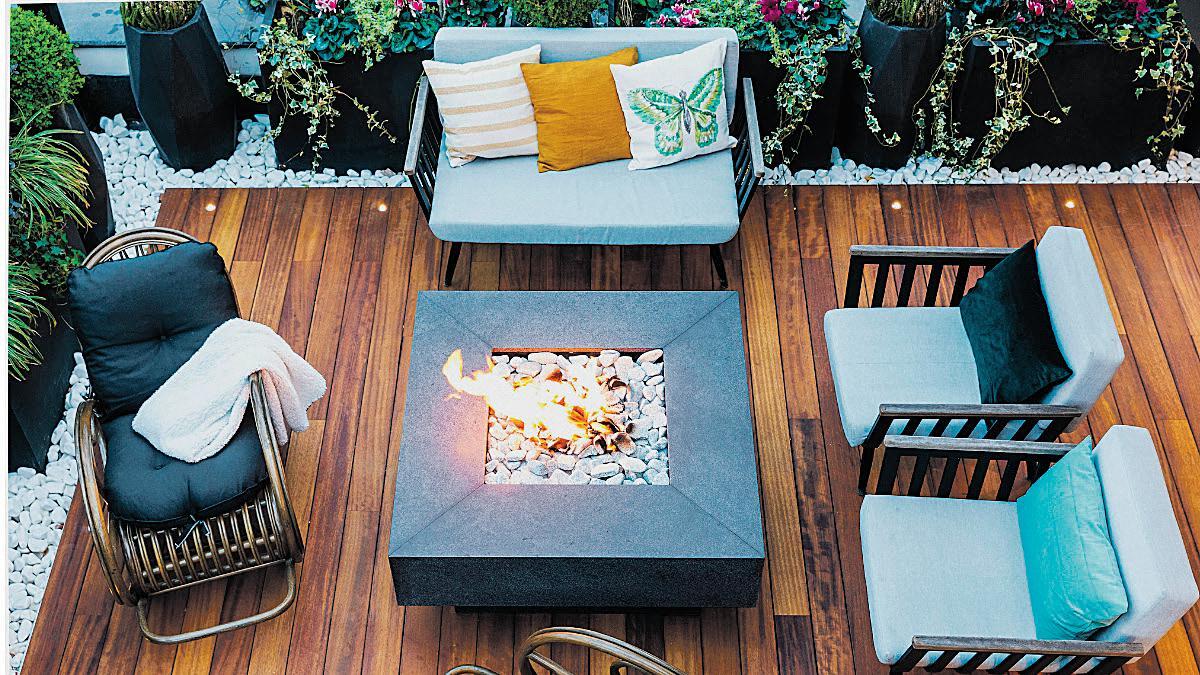
After months of crisp linens and bare tiles, autumn invites texture. Switch to chunky knits, woven blankets and wool rugs in warm, earthy tones - rust, olive or ochre. Add velvet or brushed cotton cushions for softness.
With shorter evenings, lighting makes the mood. Layer table lamps, lanterns and candles to create golden pools of warmth. On terraces, solar fairy lights or rattan pendants keep the space inviting after dark. Interior designers suggest placing mirrors
opposite lamps or candles to amplify light and atmosphere - a simple trick with big impact.
Nature, indoors and out Bring the beauty of Spanish autumn inside. Display olive branches, pampas grass or eucalyptus in terracotta pots, and swap bright citrus scents for amber or fig. Outdoors, layer blankets on chairs, add a fire pit or chimenea, and enjoy a glass of Rioja under the stars.
Slow living, Spanishstyle
Ultimately, the great switch-over is about rhythm, not redecorating. It’s about trading the rush of summer for the ease of autumn - long dinners, quiet mornings, and homes that feel like havens again. Because even when the sangria jug is tucked away and the shutters close at night, there’s still nowhere better to be than home in Spain.
BUYING a brand-new home in Spain can offer peace of mind - but only if you understand the legal guarantees that protect you.
Spain’s Building Law (Ley de Ordenación de la Edificación, LOE) sets out the warranty periods for newly built properties and the responsibilities of developers, builders and architects.
Under Article 17, new homes carry three types of protection, often referred to as the 10-3-1 system:
• 10 years for structural faults affecting stability, such as problems with foundations, beams or load-bearing walls.
• 3 years for habitability issues, including damp, poor insulation or ventilation.
• 1 year for minor finishing defects such as loose tiles or paintwork.
These periods begin from the official completion and handover date (acta de recepción), not from when the property is sold. Homeowners then have two years from discovering a defect to file a formal claim.
Regional consumer offices offer guidance on how to submit claims and what evidence is required.
All new homes built for sale must be covered by 10-year structural insurance, known as the seguro decenal de daños
materiales. This policy is a legal requirement for registration and deed transfer, protecting buyers if serious structural faults arise. Self-builders are exempt unless they sell the property within 10 years, in which case the insurance must be in place before sale.
For off-plan buyers, developers must hold advance payments in a special account and secure them through an insurance or bank guarantee (aval bancario). If a project is delayed, cancelled or denied a licence, buyers can claim a full refund plus legal interest.
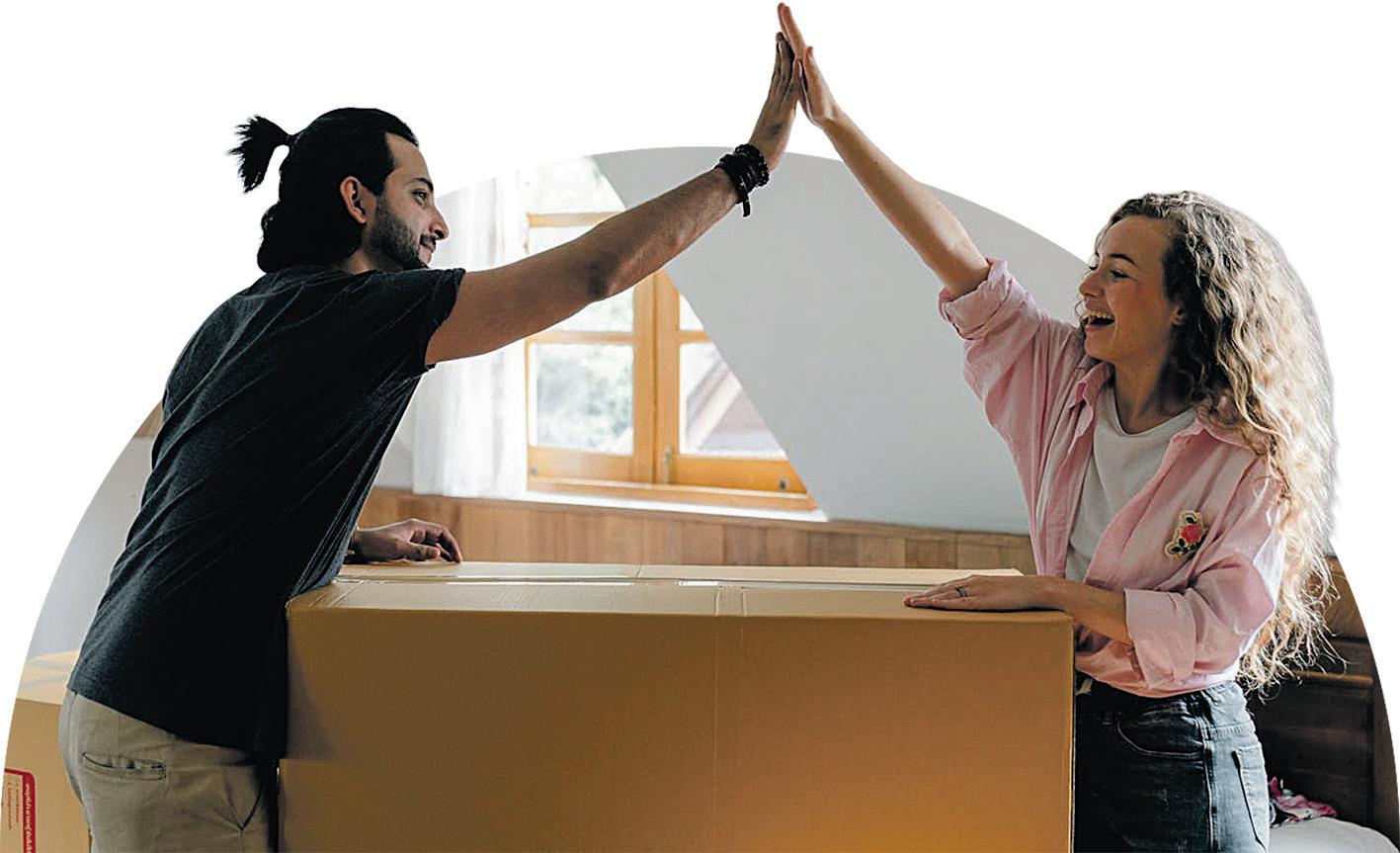
When making a claim, owners should notify the developer in writing - preferably via a burofax - and include photos, reports and completion documents. The developer will typically inspect the issue and issue a report before deciding on repairs. If rejected, pursue mediation or legal action within the time limit.
Experts at SYM Solutions & Mediations and Idealista confirm that serious structural issues are rare thanks to Spain’s mandatory decennial insurance, but smaller defects such as leaks or poor finishes are common. Acting promptly, keeping records, and understanding warranty deadlines helps ensure your dream home in Spain stays protected.
Know your rights.
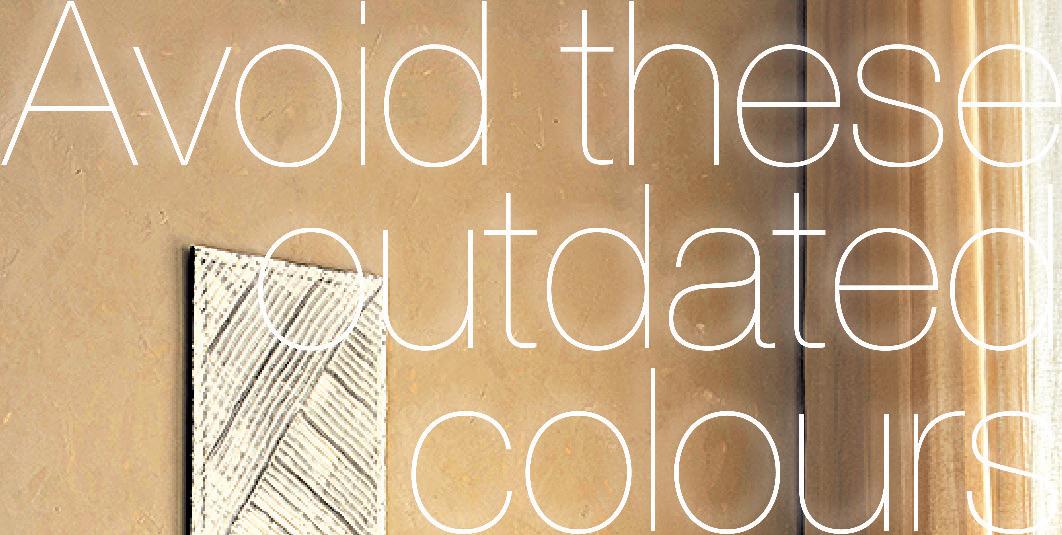

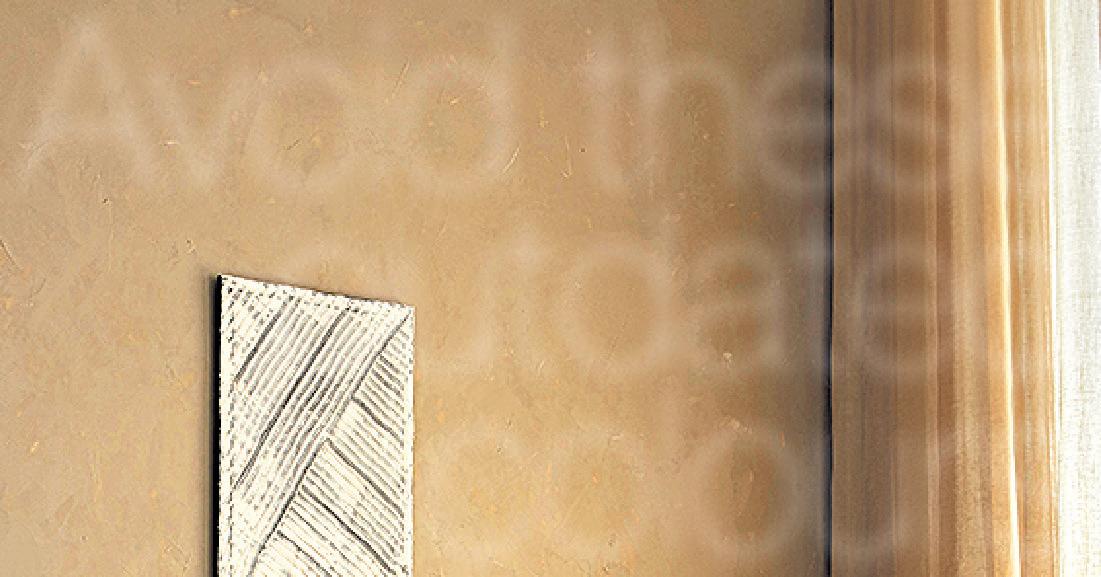

INTERIOR designers say several once-popular colour schemes are becoming outdated in 2026, with the shift moving away from saturated or overused tones. According to Homes & Gardens, colour trends are ‘some of the fastest-moving in design’, making it essential for homeowners who are regularly redecorating their holiday or long-term rentals.
The move aligns with broader styling changes already identified across the continent.
Forest green and sage losing appeal Greens have dominated interior palettes for years, but designers say the most ubiquitous shades are now falling out of favour. Homes & Gardens cites Los Angeles designer Jessica Nicastro, “Forest green is going out of style for 2026 - it has been done so much.” Washington DC designer Hannah Goldberg echoes this, noting that pale sage and deep forest greens have become “overdone” and that “people are feeling a bit tired of them.”
A modern alternative is an in-between blue and green - teal.
Mustard and butter yellow fall out of favour
Mustard yellow, a standout of the 1970s revival, is also firmly on the ‘dated’ list for 2026. Homes & Gardens quotes designer Kristina Khersonsky, who says the colour “has had its moment” but is now “overused and overproduced,” appearing in mass-market décor and furniture.
Other major publications agree. Mar-
tha Stewart Living recently predicted that butter and sunny yellows will feel outdated in the coming year as homeowners gravitate towards more richer golds and ochres.
Artificial and highly saturated tones are a no-no
A third category being phased out includes synthetic-looking colours such as bright tomato reds, sugary lilacs, bubblegum pinks, and other ‘laboratory’ shades. As fabric designer Bernie de Le Cuona told Homes & Gardens, “Artificial colours are starting to feel out… these shades can feel harsh and fleeting.”
This shift aligns with emerging design directions identified at Feria Hábitat Valencia 2025, one of Spain’s major design fairs, where earthy palettes dominated exhibitor collections for 2026.
The colours that interior designers recommend for 2026
Earthy palettes
Elle Decor highlights 2026’s move towards ‘warmer, richer neutrals’, including tobacco brown, dusty olive, and terracotta.
Jewel tones
Deep sapphire, muted emerald and cranberry red offer sophistication without overwhelming a room.
Warm base colours
Cool greys and stark whites are being replaced by softer creams, greige blends and warm porcelains, creating more welcoming interiors.
